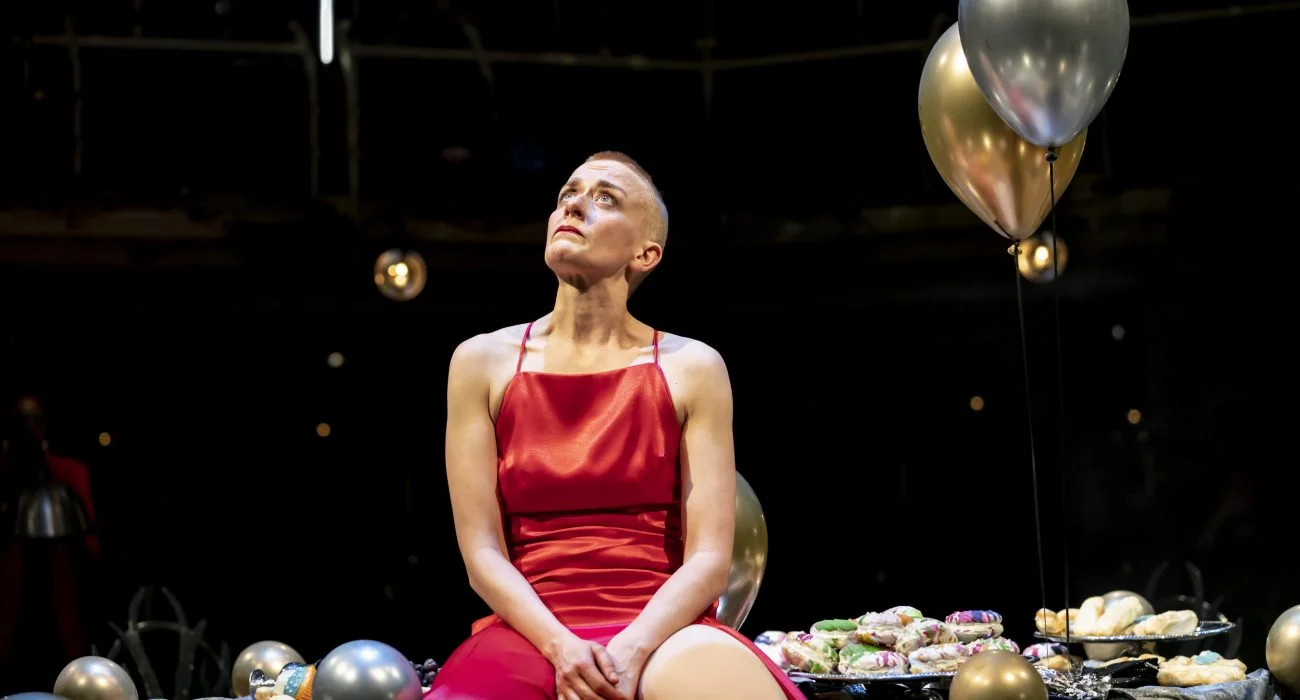The Merchant of Venice (1936) -
East London, 1936. In its latest form, Shakespeare’s controversial 16th-century play is reframed between twin pillars: a feminist and a fascist.
In this politicised new rendition, Shylock is a refugee from the Russian pogroms turned successful female moneylender. In a city ruled by fascist toffs and aryan aristocrats, Shylock fights to protect her status, her family, and her hard-won fortunes. She is glamorously adorned, characterised by ambient candlelight, and yet ruthlessly scorned by all who she encounters.
Tracy-Ann Oberman is the heart and soul of this production. Indeed, the matriarch at the show’s core is modelled on Oberman’s own great-grandmother. There’s a distinct sense that Shylock’s strong accent and quintessential gesticulation emit from a place of familiarity rather than stereotype. She is rightfully commanding each time she takes the stage.
The centuries-old ‘victim vs villain’ debate which surrounds Shylock is settled resolutely by the historical reframing of the play. Where the bard invites ambiguity in his written characterisation, Oberman’s Shylock is sassy, charming, and incredibly sympathetic. We watch as her self-assurance is dismantled by her adversaries, leading her to battle with and to mask her vulnerability in a desperate attempt to reclaim power.
By applying historical context - through subtle design touches, and not-so-subtle video footage - Brigid Larmour’s production projects an enlightened modern perspective on a controversial script.
What Larmour, and Oberman have created together is a thoughtful frame in which to translate one of Shakespeare’s most problematic and unlikeable plays. Whilst the audience are horrified by the infamous slurs thrown at “the Jew”, we are unavoidably reminded of the antisemitism and prejudice that still pervades contemporary society. This point is heavily felt in the sense of dissatisfaction and injustice that hangs in the theatre at the narrative’s conclusion.
The set is simple, to allow for scenes to chop and change, spanning each echelon of society in quick succession. The slightly dilapidated London facade also becomes a screen on which to project scenes from the fascist riots that are too often left out of British history books.
There are a few decisions which feel a little under-explained. The on-stage audience have a clear role as fellow revellers in the opening scene at a Bullingdon Club speakeasy. Yet, as we enter private spheres and female bedchambers, their position becomes a little awkward.
Having said that, the cast seems to gain energy from the crowd. Hugged by the onstage audience, and actively breaching the promontory to enter and exit through the stalls, the cast bring exuberant characterisation to each role.
Xavier Starr, as Gratiano, almost steps straight out of a PG Wodehouse novel. He acts every bit the harmless drunken toff before letting loose his malice. Hannah Morrish’s privileged Portia has a dominating presence, rewriting her character’s seemingly powerless narrative. We expect Raymond Coulthard’s purposefully cold Antonio to be merciless, but the opposition between leading ladies is the more gut-wrenching conclusion.
Balancing Liz Cooke’s sharp 20th-century costumes, the text remains largely unedited. As such, there are some unavoidable constraints of a 90-minute play that is split into five acts. Characters rush on and off stage between slightly disjointed scenes, and some of the beautifully curated footage - by Video Designer Greta Zabulyte - feels a little awkwardly shoehorned in between.
For brief periods, when the actors stand on an empty stage in front of a plain cyclorama, we’re transported to the Rose Theatre in 1605 rather than East London in the ‘30s. Yet, the final act - the famous courtroom scene - slows the pace, anchors the action, and increases the dramatic momentum. There’s time enough for props and furniture, careful movement, and some powerful vignettes of the Jewish antagonist opposite the red armbands of the fascist union. The villainy that lies beneath the surface for much of the play comes to a head.
It’s in the bookends that Larmour and Oberman truly make their mark on the play. An added epilogue allows Shylock some recourse against the lingering injustice that we all feel. We are left with an important comment on pervasive antisemitism and gendered power imbalance. It’s certainly not a joyful ending, nor a feel-good play, but it is a well-crafted vehicle to spark significant conversations.
The Merchant of Venice (1936) plays at HOME, Manchester until 25th March. For tickets and more information, visit the HOME website.
(Photos by Marc Brenner)
Explore more perspectives on female-fronted Shakespeare in our reviews of A Midsummer Night’s Dream and Macbeth.







